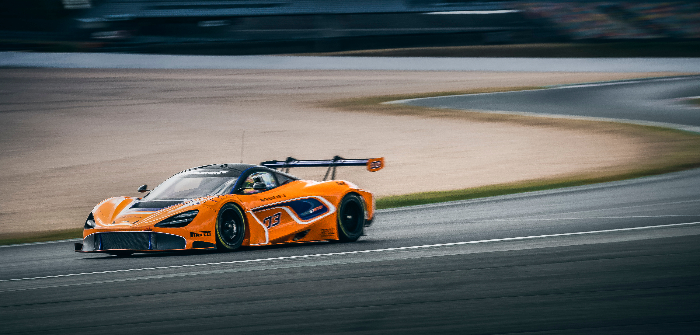Track testing of the first GT race car to be developed by McLaren Automotive’s new customer racing division is well underway and will see the McLaren 720S GT3 tested extensively across Europe, the USA and Middle East. The new GT3 challenger, which is based on the 720S supercar, is being readied for its competition debut in 2019 when it will be eligible for all GT3 grids globally.
The track-based phase of the development program follows extensive computational fluid dynamics (CFD) simulations and incorporates a rigorous test regime that will validate key performance data and long-distance durability.
“It was an incredibly exciting moment for us to see our new 720S GT3 begin the intensive track-based phase of a development program that we are confident will provide our customers with a first-class GT race car,” said Mike Flewitt, McLaren Automotive CEO. “Enabling our customers to go racing is integral to the business strategy of McLaren Automotive and we are committed to supplying teams with exceptional GT cars and the world-class support to get the most out of them.”
At the heart of the 720S GT3 is a carbon fibre MonoCage II chassis structure. A race-prepared version of the M840T 4.0-liter twin-turbo V8 engine provides the power. Development work has been undertaken within a new dedicated GT race facility at McLaren Automotive in Woking, Surrey, where all new GT3 cars will be hand-assembled. The first two development cars have embarked on an extensive physical test program, which will initially use tracks on both sides of the Atlantic, followed by an intensive Middle East program before the end of the year.
Development targets for the 720S GT3 include optimized fuel efficiency and tire management, improved reliability, durability and serviceability – both in race conditions and between events. Breadth of handling balance and predictable on-limit behavior for both professional and amateur drivers are also central to the project.
Working with technical tire partner Pirelli, the team of GT race engineers from McLaren are running parallel durability and performance tests covering more than 18,500 miles (30,000km), with various 24- and 36- hours tests being completed by multiple race prototype cars.


